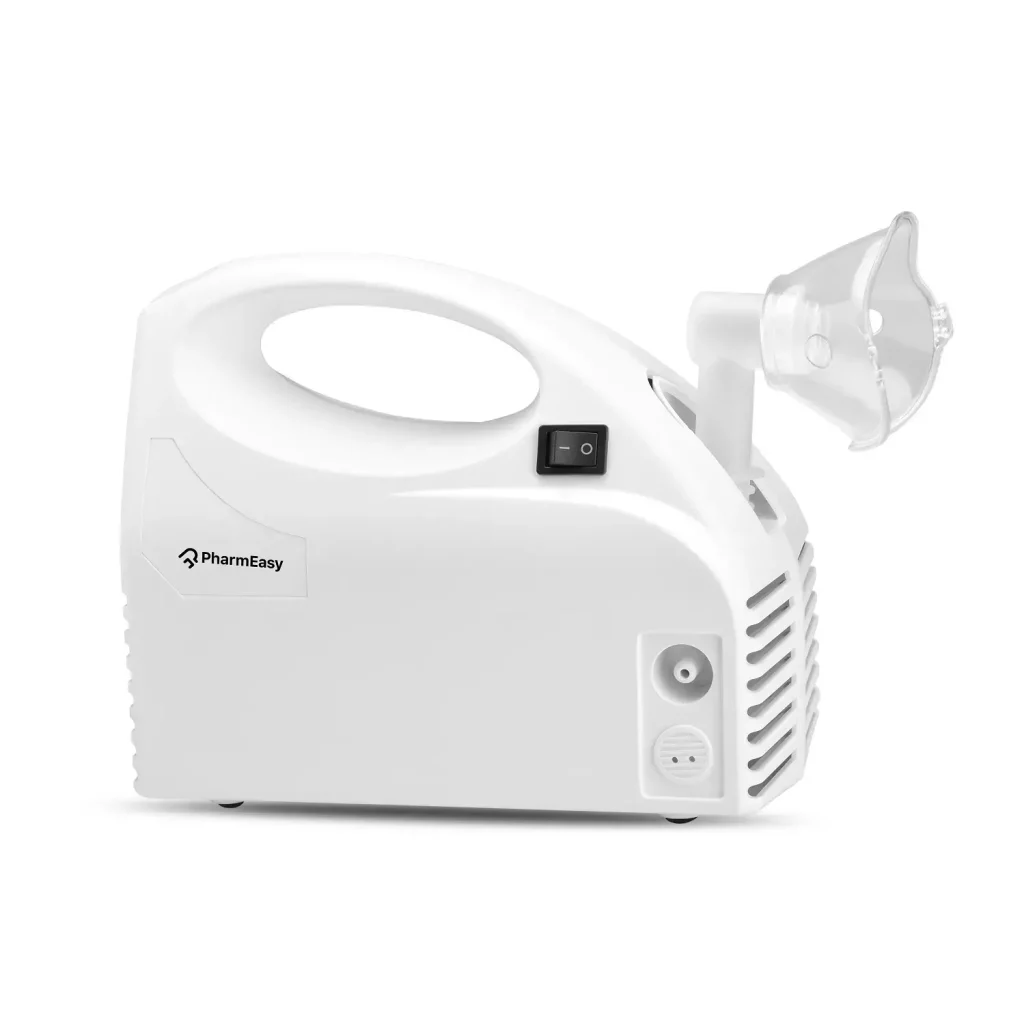All You Need To Know About A Nebuliser!
By Dr. Nikita Toshi +2 more

Get,

to manage your symptom
Get your,


4 Cr+ families
benefitted

OTP sent to 9988776655



You’ve successfully subscribed to receive
doctor-approved tips on
Whatsapp

Get ready to feel your best.

Hi There,
Download the PharmEasy App now!!


Register to Avail the Offer
Send OTPBy continuing, you agree with our Privacy Policy and Terms and Conditions

Hi There,
Sign up on PharmEasy now!!
Trusted by 4 crore+ families

OTP sent to 9988776655



You have unlocked 25% off on medicines




Code: NU25
By Dr. Nikita Toshi +2 more
With an increase in the number of people suffering from different diseases affecting the lungs, nebulisers have gained more popularity due to their benefits. Nebulisers are extremely helpful devices for people suffering from different conditions of the lungs, e.g. infections of the lungs, COPD, cystic fibrosis, bronchitis, bronchiectasis, pneumonia etc. While most people are familiar with the concept of an inhaler, nebulisers are slowly catching on. Nebulisers must be used as prescribed by a doctor. These devices can also help to deliver salt water mist (medical grade) to airways in order to loosen the mucous plugs and ease expectoration( coughing out mucous). In this article, we discuss what a nebulizer is, what it does and why you should consider one.
Table of Contents
A nebuliser is a small portable device that runs electronically, turning liquid medication into a mist. The patient then needs to breathe in the aerosol thus created through a mouthpiece. The mist, when inhaled, travels directly to the lungs, ensuring better absorption of the medication and a more effective outcome of your ongoing treatment.

The nebuliser has four major parts:
The nebuliser machine functions by forcing air through the nebuliser chamber, wherein the liquid medication needs to be poured. This forced air turns the medicine into a mist that comes out through the mouthpiece or the mask by making its way through the connected tube. The medication should be inhaled for about 10-15 minutes or until the medication has evaporated completely. This instruction will be given to you by your doctor.

A nebuliser can be recommended to you by your doctor in case your respiratory condition is of severe nature. The machine helps to clear the airways effectively and fast because the liquid medication directly reaches the lungs and acts better. A nebuliser is helpful in the following ways:
Cleaning the non disposable nebuliser masks and nebuliser as per company guidelines is very important in long term usage as colonization of bacteria in the nebulisers are very common.
Dr. M.G. Kartheeka, MBBS, MD(Pediatrics)

The two most common types of nebulisers .available on the market are:
If you have a disposable nebulizer, discard it after one time use. If you have a reusable nebulizer, clean it after each use and try to remove the moisture as much as possible.
Dr. Ashish Bajaj, M.B.B.S., M.D in Clinical Pharmacology and Toxicology

While there are many brands selling nebulisers in the market, the PharmEasy Nebuliser (PEN-002) can also be a good choice for you if you are on the lookout for affordable, safe and accurate medical devices. The PharmEasy Nebuliser has been designed with the latest RespiRight technology that atomises liquid medication into five types of particles. This ensures that the medication not only reaches the lungs effectively, minimising wastage but travels quickly, within minutes!
The device is also easy to handle, easy to clean and comes with a child and paediatric mask. The PharmEasy Nebuliser has received FDA approval and is known for its ability to help people with respiratory conditions such as COPD, asthma, cystic fibrosis, bronchitis, pneumonia, chronic cough and many others. If you have someone in your family who suffers from chronic respiratory trouble, you can speak to a doctor and consider investing in the PharmEasy Nebuliser. The device is affordable, convenient to use and suitable for people of all ages.
For the safety and well-being of your loved ones who suffer from respiratory conditions, talk to your doctor about having a nebuliser in the house and the medicines that can be used with it. At home- nebulisers can come to your aid if the problem worsens or requires frequent nebulisation. Breathing difficulty should not be ignored. Always consult a doctor for the diagnosis of the condition and follow the treatment prescribed.
Disclaimer: The information provided here is for educational/awareness purposes only and is not intended to be a substitute for medical treatment by a healthcare professional and should not be relied upon to diagnose or treat any medical condition. The reader should consult a registered medical practitioner to determine the appropriateness of the information before consuming any medication. PharmEasy does not provide any guarantee or warranty (express or implied) regarding the accuracy, adequacy, completeness, legality, reliability, or usefulness of the information; and disclaims any liability arising thereof.
Links and product recommendations in the information provided here are advertisements of third-party products available on the website. PharmEasy does not make any representation of the accuracy or suitability of such products/services. Advertisements do not influence the editorial decisions or content. The information in this blog is subject to change without notice. The authors and administrators reserve the right to modify, add, or remove content without notification. It is your responsibility to review this disclaimer regularly for any changes.

Leave your comment...
Comments